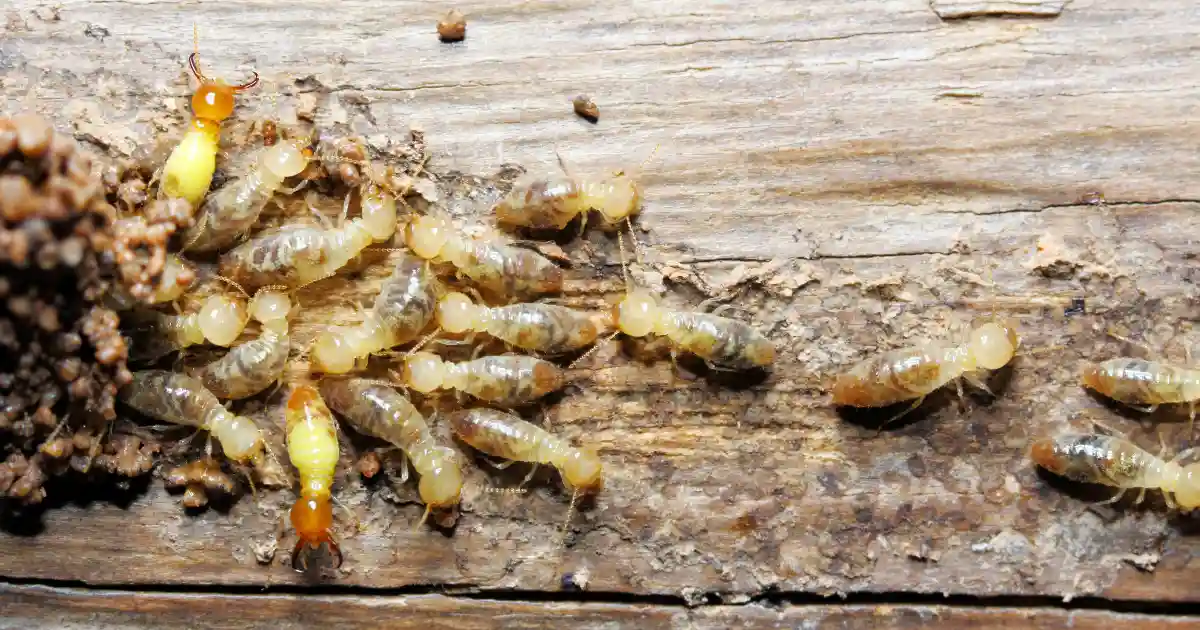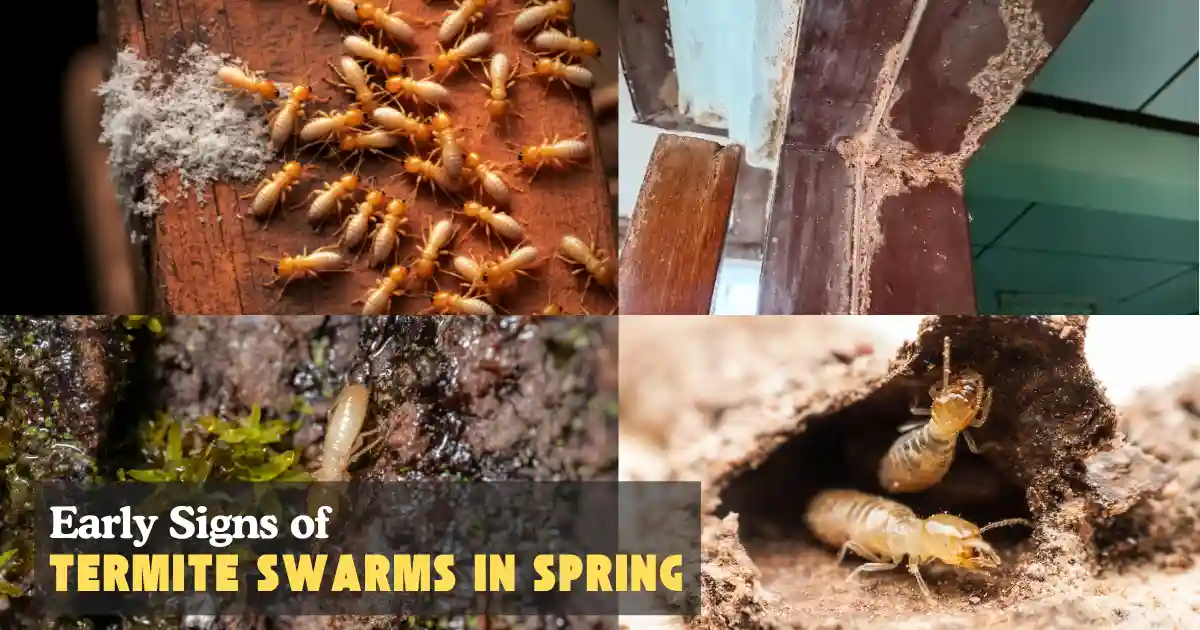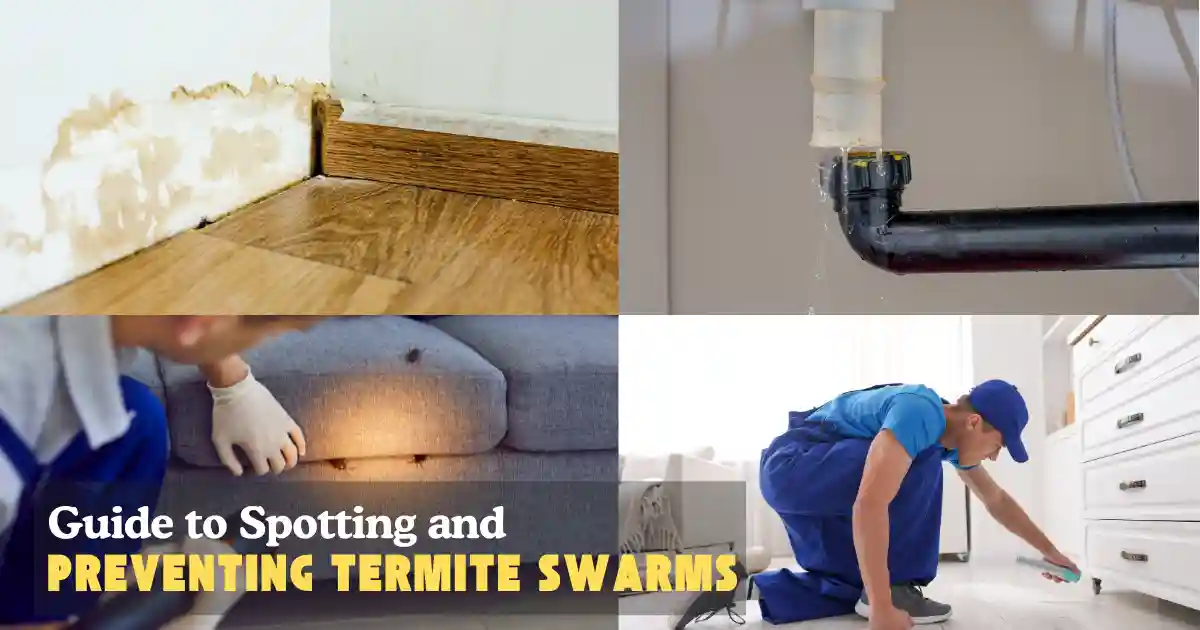Termite swarms are one of the most alarming signs of a potential pest problem for homeowners especially in spring, when these destructive insects are most active. Spotting a termite swarm early and taking the right steps can save you thousands in repairs and protect your home’s structure and value.
This detailed guide will provide everything you need to be aware of regarding termite swarms, including warning signs that indicate early, and preventative strategies that costs of treatment and green solutions to 2025 and beyond.
What Are Termite Swarms?
Termite swarms occur when mature termites let loose their wings like reproduction termites (alates) to mat and start new colonies.

- The termite swarms are typically seen during spring, shortly after the rain, and when temperatures rise.
- Termite swarms are attracted by light and are often discovered near windows, doors, or even lighting fixtures.
- Swarms are an indication of a well established colony, which is typically hidden in walls, floors or foundations.
- Being able catch the swarm before it becomes too large is the best way to ensure that there is no any damage on the building.
Cost of Termite Swarms Treatment by Type
| Treatment Type | Average Cost (2025) |
| Inspection | $75 – $200 |
| Liquid Barrier | $1,200 – $3,000 |
| Bait System | $1,500 – $3,500 |
| Fumigation | $2,000 – $8,000 |
| Spot Treatment | $250 – $900 |
| Preventive Treatment | $200 – $600 |
Costs vary depending on the area, the size of the property and degree in the extent of infestation.
Cost of Termite Swarms Treatment by Home Size
| Home Size | Inspection | Full Treatment | Repairs (if necessary) |
| Apartment/Condo | $75 – $150 | $800 – $2,000 | $500 – $2,000 |
| Small Home | $100 – $200 | $1,200 – $3,000 | $1,000 – $4,000 |
| Medium Home | $150 – $250 | $1,800 – $4,500 | $2,000 – $8,000 |
| Large Home | $200 – $300 | $2,500 – $8,000 | $4,000 – $15,000 |
In the event of serious infestations and structural damage could raise repair costs significantly.
Factors Influencing Termite Swarms Risk and Damage
- Climate: Warm or humid areas are more active for termites.
- Home Age: Older houses with wood structures may be more vulnerable to being attacked.
- Moisture: Pipes that leak or leak, insufficient drainage, and damp basements attract termites.
- Wood to Ground Contact: Decks, landscaping and porches may serve as accessibility points.
- Previous Infestations: Homes that have a experience with termites are more at danger.
- Technique of Construction: Slab foundations and crawl spaces can be a great area to conceal activities of termites.
Early Signs of Termite Swarms in Spring

- Winged insect swarms: Most often, they are near windows, doors or lighting sources.
- Wasted Wings: Small, transparent wings that are laid on windowsills, floors or floors.
- Mud Tubes: Tubes of the size of pencils that can be positioned on foundation walls, and are used by termites to move around.
- Hollow Sounding wood: The wood should be tapped, and listen for echoes.
- Frass (Termite Droppings): Small, pellet-like droppings found in areas which are plagued by termites.
- Bobbing Paints and Blisters: The termite’s moisture can cause paint to crack.
- Windows or Door Windows: Termite damage could cause wood frames be swollen.
Pro Tip:
If you observe an increase in termites within your house, these might be living in your home.
Security Options: What to do To Secure Your home from Termites
- Physical Barriers: Sand or stainless steel barriers used in construction.
- Chemical Barriers: Treatments for soil around foundations.
- Bait Stations: They are set up around your property in order to draw termites inside and rid them of their nests.
- Annual Inspections: Every year professional inspections identify problems before they become grave.
- Control of Moisture Control: Fix leaks to increase drainage and use dehumidifiers.
- Treatment for Wood: The wood is treated in order to create decks, fences, or landscaping.
Curb Appeal: How Termite Affects Your Home’s Value
- Visual Injury: Floors that appear wrinkled damaged doors, sagging doors and damaged paint can detract from curb appeal.
- Inspector’s Reports: The background of termites may affect the value of a resale or the buyer’s trust.
- Prevention is a win: Well maintained termite free houses sell faster and cost more.
Example:
A house that recently been treated for termite damage and a transferable guarantee are more appealing to prospective buyers.
Step by Step Guide to Spotting and Preventing Termite Swarms

1. Inspect Your Home Regularly
- Be sure to look for wings of mud tubes and wood damage every spring. Be sure to check for wood damage wings and the mud tubes.
- Use a flashlight for examination of attics, and crawl spaces.
2. Eliminate Moisture Sources
- Restore leaky pipes downspouts and gutters.
- Make sure you remove the water from the bottom.
- Utilize dehumidifiers for damp places.
3. Remove Wood to Ground Contact
- Use wood, firewood or mulch to an 18 inch minimum away from your house.
- Remove trees and plants from the property.
4. Seal Entry Points
- Caulk Cracks on foundations as well as in pipes.
- Screens can be installed on vents and windows.
5. Schedule Professional Inspections
- Use a certified pest control professional for regular inspections.
- You must have an official report written and adhere to the recommendations.
6. Consider Preventive Treatments
- Apply soil or wood treatments if you live in an the area of risks of high.
- Set up bait stations to provide constant security.
7. Act Quickly if You Spot a Swarm
- Look for a sample or take photos to determine.
- Contact a pest control specialist immediately.
- Be careful not to disturb the swarm with the sprayer you.
Maintenance and Longevity: Keeping Your Home Termite Free
- Every spring, plan an annual inspection, or more frequently in areas that have significant risk.
- Replace and test whenever needed.
- Keep the plants tidy and above on the floor.
- Moisture is a termite magnet.
- Make sure that you keep firewood off of the floor in a safe distance from your home.
- The treatment of soil and wood might require reapplications every few years.
Common Mistakes to Avoid
- Small swarms or wings could signal a more serious problem.
- The more professional chemicals are generally more effective and safer.
- Regular check ups are the best method to protect yourself.
- Always fix leaks and improve drainage.
- Spot treatments may create hidden colonies.
- The delay can cause more damage and a higher cost.
Environmental Impact: Eco Friendly Termite Control Solutions
- Bait Techniques: Utilize less pesticides and focus on termites only.
- Physical Barriers: Sand and stainless steel barriers aren’t chemical.
- Borate Treatments: Mineral that occurs naturally and prevents termites from coming in.
- Integrative Pest Management (IPM): The combination of monitoring, prevention and a targeted approach.
- Sustainable Building Materials: Utilize termite proof woods, recycled or recycled materials.
Conclusion
Termite swarms which appear in spring are a warning that homeowners must know about. If you can recognize the early warning signs and are taking precautions and taking action immediately, you can protect your home from costly damage and keep its value for years to come. Don’t wait for a swarm to become an infestation schedule regular inspections, keep your home dry, and invest in professional termite protection for peace of mind.
FAQs
When do termite swarms typically take place?
Termite swarms usually occur during spring, especially after rainfall and when temperatures are rising.
What should I do if I spot termites swarming inside my home?
Take a sample or snap a picture, then contact a pest control expert immediately.
How much does termite treatment cost?
Inspections are priced between $75–$200. Full treatment ranges from $1,200 to $8,000, depending on the size of the house and severity of the infestation.
Can I prevent termite swarms without chemicals?
Yes, by controlling moisture, using physical barriers, and scheduling regular inspections.
How do I know if my house has termite damage?
Look for hollow-sounding wood, frass (termite droppings), mud tubes, and tight-fitting doors or windows.
Are termite treatments safe for pets and children?
Professional treatments are safe when applied properly. Ask your provider for specific safety information.
How often should I have my house inspected for termites?
At least once a year, and more frequently in high-risk areas.
Does home insurance cover termite damage?
Most policies do not cover termite damage, as it is considered preventable.

